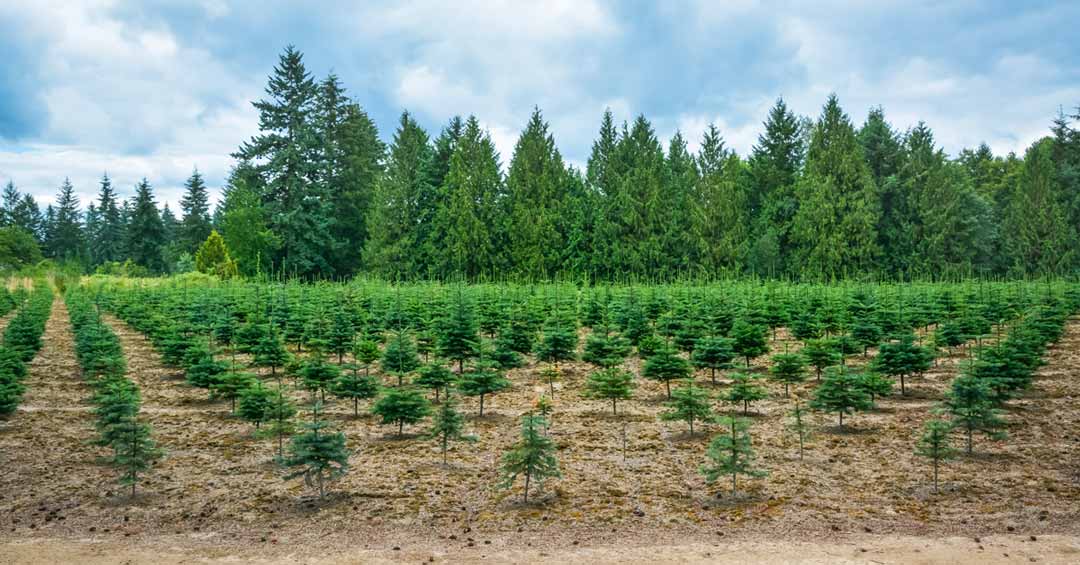4 min read
Forestry Industry Comes Together to Reach Sustainability Goals
 Harvey Greer
:
Oct 6, 2023 12:00:00 AM
Harvey Greer
:
Oct 6, 2023 12:00:00 AM

Meeting international sustainability goals will not come in the form of competition. The objective, a safer world and stable future, is a collective one. Accordingly, we need to all come together in service to achieving this goal.
The global forestry industry has taken a serious, cooperative step in kickstarting our path to get there.
A faction of 10 major global forestry firms recently announced the formation of the International Sustainable Forestry Coalition (ISFC). This marks one of the most significant collaborations in the history of the forest industry’s fight against climate change and deforestation.
About the ISFC
The ISFC represents a collective of forestry companies committed to transitioning the world to a sustainable future. The forestry industry itself plays an immense role in our world's climate. Therefore, practices such as deforestation directly affect worldwide carbon capture objectives. Trees are also becoming increasingly critical in the move to renewable building materials and biofuel.
Related: Wood Products and Renewables: How the Forest Helps Meet Climate Goals
Simply stated, these practices cannot continue if we ever hope to meet global climate goals. The coalition’s members recognized this need and founded the organization to more directly address the problem.
The ISFC includes 10 founding members:
- Dasos Capital
- F&W Forestry
- Gresham House
- Marubeni
- Mitsui & Co.
- New Forests
- Oji Holdings Corporation
- Rayonier
- Stora Enso
- UPM
At the time of this blog’s publication, Spokane WA-based PotlatchDeltic has also joined the coalition.
These companies span across the globe, managing over 9 million hectares of forestlands throughout 27 countries. More countries will likely join as the organization continues to grow.
Meeting the Climate Crisis Head-On
The ISFC came about based on the growing attention and urgency of the climate change crisis and its relation to global forestry. As the world population continues surging, the earth system faces never-before-seen strain. For example, land use competition has continued surging in response to the growing demand for agriculture.
Unfortunately, this has led to rampant deforestation—among other devastating climate-related impacts. Land rights, lack of freshwater access, and water contamination are just a few examples.
The organization aims to directly address and combat deforestation through a unified, cooperative effort. Rather than hearing from multiple voices, the ISFC provides a collective voice. By doing so, their voice becomes louder and stronger in the development and enforcement of international policies and regulations.
The ISFC Position: Knowledge, Expertise Will Directly Aid Global Climate Efforts
The ISFC released a position paper outlining the organization’s primary role and overall objectives as an organization. The document signifies both the importance of the carbon transition and how the global forestry industry will contribute.
One prominent point the organization makes clear is that professionals across the global forestry industry should play a much greater role in achieving climate mitigation objectives.
The “should” is important to call attention to here. Major forestry firms bring together a wealth of experience relative to all elements of forest management. From planting and land use to harvests and wood production, this knowledge goes beyond the information itself. It shows how the forestry process actually works within real world systems and constraints.
Armed with this knowledge, groups like the ISFC can collaborate with climate scientists and forest researchers. All parties can work together to develop reality-based processes and policies to help combat deforestation and find a way forward.
Making Up for Lost Time
Perhaps the biggest challenge facing our world regarding the climate crisis is the timeframe. The world is right on the cusp of breaching the 1.5 degree warming from human-caused climate change. Should we exceed this limit, scientists warn we’ll hit a “point of no return” with devastating climate consequences.
Through concerted global efforts, we have certainly made major progress regarding decarbonization. But we still have a long way to go—and we’re quickly running out of time.
The ISFC aims to do its part by utilizing the above-mentioned forest expertise. As the position paper explains:
“The key challenge, as so many have identified, is how we move at the speed and scale that can help address these challenges in the near term, rather than decades into the future. How can the forestry sector contribute to keeping the 1.5-degree objective alive, increase global timber and fibre supplies at the rate needed to pivot to the bioeconomy, while halting deforestation, reversing biodiversity loss, and enhancing the lives and livelihoods of smallholders, Indigenous Peoples, and rural communities? We submit that the forestry sector has considerable expertise to contribute to these challenges from decades of experience.”
- ISFC Position Paper, Expanding the Forestry Sector Contribution to the Transition to a Sustainable Society, Sept. 2023
Unpacking Forestry’s Climate Goals
From a global forestry perspective, combating deforestation serves as the keystone to all major carbon-reducing efforts. This will be achieved through policies and regulations such as Europe’s recent EUDR, which requires record-keeping across major commodities sold in European markets. And it will also come by enhancing current growing practices through technology and innovation.
Scaling forest growth will become increasingly important as demand rises. Wood products, from boards to biomass, will play an immense part in the transition to a bioeconomy. With this growth must come better practices for forestry yields.
According to the ISFC, this will not come by further cutting into untouched forests in places like the Amazon. It will instead come through the forestlands we’re already using.
As the position paper explains, “We will need to accomplish this [increased feedstock demand] primarily by carefully intensifying plantations and semi-natural forests, not by extending the amount of timber harvested from virgin forests.”
This will be achieved using the following strategies:
- Increasing growth yields of timber through innovation and growing practices. (We’ve already seen 1-3% increases.)
- Investing in technology to improve forest strength and resistance to disease.
- Implementing forest management practices such as mixed species planting and forest thinning.
- Identifying underutilized semi-natural forestlands to increase growth output.
The Value of Coming Together
The goals set forth by the ISFC are lofty and comprehensive, to say the least! But setting such goals is a necessary step toward progress.
The work of the coalition will rely on the cooperation of competing global forestry companies. At face value, this seems like a contradiction of terms. But the cooperative efforts made here will benefit everyone working across the forestry industry.





